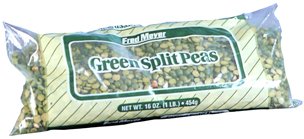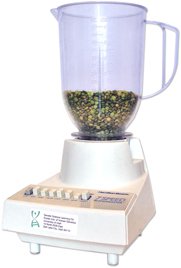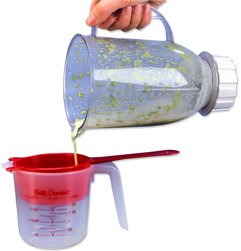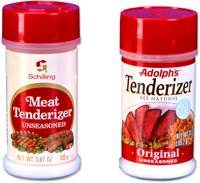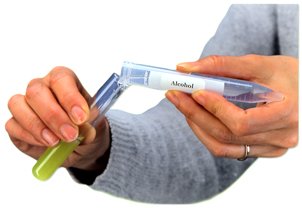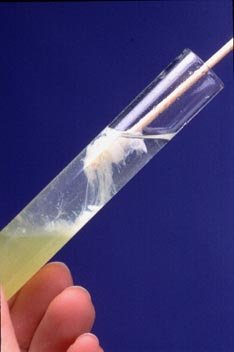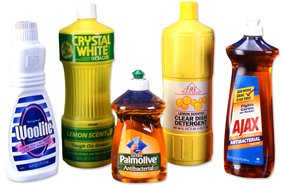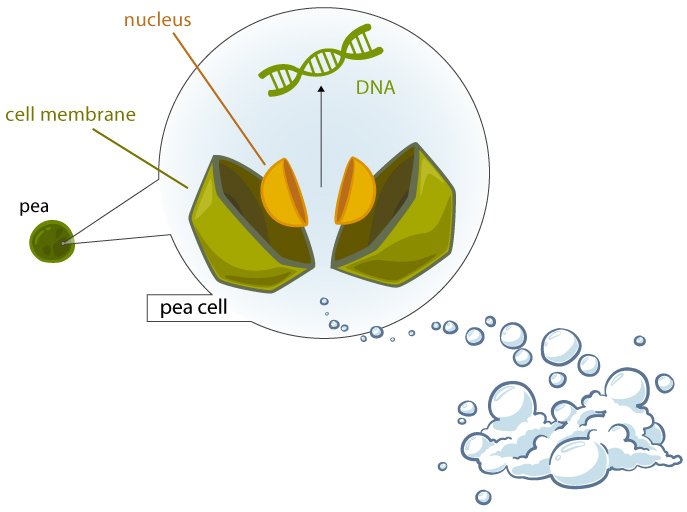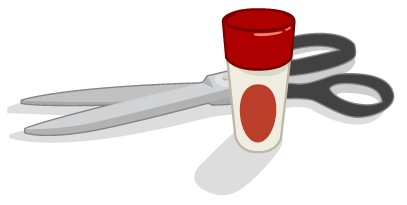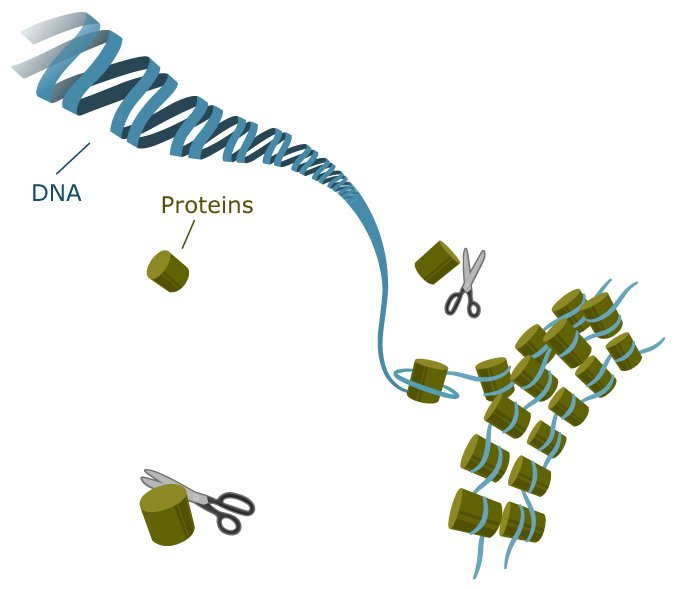3. Why add salt? What is its purpose?
Salty water helps the DNA precipitate (solidify and appear) when alcohol is added.
4. Why is cold water better than warm water for extracting DNA?
Cold water helps keep the DNA intact during the extraction process. How? Cooling slows down enzymatic reactions. This protects DNA from enzymes that can destroy it.
Why would a cell contain enzymes that destroy DNA? These enzymes are present in the cell cytoplasm (not the nucleus) to destroy the DNA of viruses that may
enter our cells and make us sick. A cell's DNA is usually protected from such enzymes (called DNases) by the nuclear membrane, but adding detergent destroys that membrane.
5. How is the cell wall of plant cells broken down?
It is broken down by the motion and physical force of the blender.
6. What enzyme is found in meat tenderizer?
The two most common enzymes used in meat tenderizer are Bromelain and Papain. These two enzymes are extracted from pineapple and papaya, respectively.
They are both proteases, meaning they break apart proteins. Enzymatic cleaning solutions for contact lenses also contain proteases to remove protein
build-up. These proteases include Subtilisin A (extracted from a bacteria) and Pancreatin (extracted from the pancreas gland of a hog).
7. How much pineapple juice or contact lens solution should I use to replace the meat tenderizer?
You just need a drop or two, because a little bit of enzyme will go a long way. Enzymes are fast and powerful!
8. Why does the DNA clump together?
DNA precipitates when in the presence of alcohol, which means it doesn't dissolve in alcohol. This causes the DNA to clump together when there is a lot of it.
And, usually, cells contain a lot of it!
For example, each cell in the human body contains 46 chromosomes (or 46 DNA molecules). If you lined up those DNA molecules end to end, a single cell would contain
six feet of DNA! If the human body is made of about 100 trillion cells, each of which contains six feet of DNA, our bodies contain more than a billion miles of DNA!
9. How can we confirm the white, stringy stuff is DNA?
There is a protocol that would allow you to stain nucleic acids, but the chemical used would need to be handled by a teacher or an adult.
So, for now, you'll just have to trust that the molecules precipitating in the alcohol are nucleic acids.
10. Isn't the white, stringy stuff actually a mix of DNA and RNA?
That's exactly right! The procedure for DNA extraction is really a procedure for nucleic acid extraction.
11. How long will my DNA last? Will it eventually degrade and disappear?
Your DNA may last for years if you store it in alcohol in a tightly-sealed container. If it is shaken, the DNA strands will break into smaller pieces, making the DNA harder to see.
If it disappears it's likely because enzymes are still present that are breaking apart the DNA in your sample.
Using more sophisticated chemicals in a lab, it is possible to obtain a sample of DNA that is very pure. DNA purified in this way is actually quite stable
and will remain intact for months or years.
